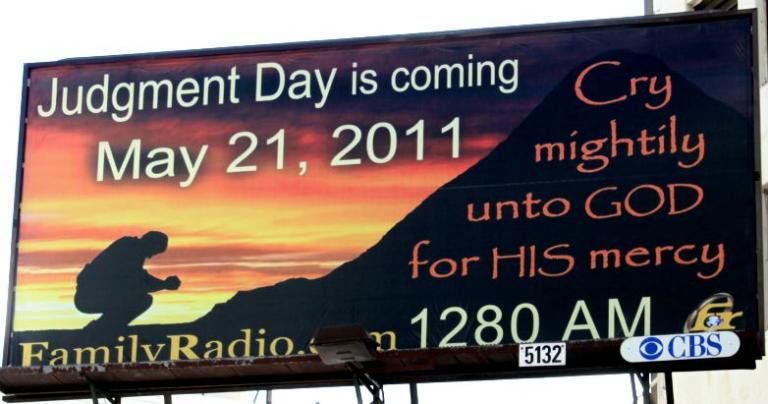 The apostle Paul throws down the gauntlet in 1 Cor. 15:6, and many apologists see it as powerful evidence in favor of the resurrection story. Paul in effect dares his readers to go check out his claim if they want. Who would make a claim like this, making himself vulnerable to readers catching him in a lie (or at least an embarrassing error), if he didn’t know it were true?
The apostle Paul throws down the gauntlet in 1 Cor. 15:6, and many apologists see it as powerful evidence in favor of the resurrection story. Paul in effect dares his readers to go check out his claim if they want. Who would make a claim like this, making himself vulnerable to readers catching him in a lie (or at least an embarrassing error), if he didn’t know it were true?
[Jesus] appeared to more than five hundred of the brothers and sisters at the same time, most of whom are still living, though some have [died]. (1 Cor. 15:6).
Paul’s number has a default credibility like Joe McCarthy’s numbers of Soviet spies did. Who would say a number if it weren’t correct, right?
But this confident defense of the resurrection wilts under scrutiny.
Let’s think this through. Imagine that we’re in that church in Corinth and we have just received Paul’s letter.
1. What does “appeared” mean? Jesus “appeared” to Paul as a vision (Acts 9:3–9), but Paul uses the same verb to refer the appearance of Jesus to Peter, James, and the 500 as well as to Paul. Could Paul think that the appearance to everyone was as a vision?
2. Who are these 500 eyewitnesses? Names and addresses, please? To find out, someone would need to send a letter back to Paul, at that moment 200 miles across the Aegean Sea in Ephesus. If a church member had the money, time, and guts to write this letter, why would Paul have deigned to reply?
Even if Paul had witnessed Jesus in front of the 500 (he hadn’t), it’s possible he wouldn’t have known a single person in that crowd. And even if Paul thought the number were accurate, “500 eyewitnesses” might be all he had heard, and he wouldn’t have been able to back it up with any evidence.
3. How many will still be around? Paul wrote this epistle in about 55CE about a supposed event that occurred over 20 years earlier. Of the 500 eyewitnesses, how many are still alive and still in Jerusalem, ready to be questioned?
4. Who could make this trip? Jerusalem is 800 miles away, and getting there would involve a long, dangerous, and expensive trip.
5. How many candidates for this trip? Paul had only started the church in Corinth a couple of years earlier. There would probably have been less than 100 members.* Would even one have the means and motivation to make the big trip to Jerusalem?
6. Who would challenge Paul? If the founder of the church says something, who’s likely to question it? There might well have been people who were unimpressed by Paul’s message, but these would never have joined the church. Others within the church might have become disappointed and left. Even if these people had wanted to embarrass Paul, they wouldn’t have been in the church community to learn of the claim.
7. What did the eyewitnesses actually see? Let’s imagine that we have the money and daring to make the trip, we have a plan for whom to interview in Jerusalem, and we’re rebellious enough to spit in the face of our church’s founder to see if he’s a liar.
After many adventures, we reach Jerusalem. What will the eyewitnesses say? At best they’ll say that, over 20 years ago, they saw a man. Big deal—that’s uninteresting unless they saw him dead before. Had they been close enough to the movement to be certain that they recognized Jesus? Human memory is notoriously inaccurate. There’s a big difference between the certainty one has in a memory and its accuracy—these don’t always go together.
8. So what? Suppose all these unlikely things happen: we make the long trip, we search for eyewitnesses, and we conclude that Paul’s story is nonsense. If we successfully make the long trip back, what difference will this make? Even if we had the guts to tell everyone that Paul’s story was wrong, so what? Who would believe us over the church’s founder? We’d be labeled as bad apples, we’d be expelled from the church, the church would proceed as before, and Paul’s letter would still be copied through the centuries for us to read today!
9. Why is this even compelling evidence? No gospel uses this anecdote as evidence. For whatever reason—that they’d never heard it or that they had and felt that it was uninteresting—the gospels argue that this is unconvincing evidence. Why should we think otherwise?
In my post on the Shroud of Turin, I noted that our very first historical record of the Shroud is a letter stating that the shroud was a fake. That’s done nothing to steer people away from a belief they want to hold. As with the Naysayer Hypothesis, apologists imagine that this argument is far stronger than it is.
Who would imagine that a supernatural claim written two thousand years ago would be compelling when we wouldn’t find it compelling if written two minutes ago?
Let’s consider two possible conclusions about this verse.
1. The resurrection happened supernaturally as the gospels describe it. (Let’s pretend that the gospels all tell the same story.)
2. Tales circulated orally in the years after the crucifixion among Jesus’s followers, with the number of eyewitnesses to the risen Christ growing with time.
Why imagine a supernatural story when a natural story explains the facts?
If you can’t be a good example,
then you’ll just have to serve as a horrible warning.
— Catherine Aird
Photo credit: University of Michigan
* Prof. Philip Harland’s “Religions of the Ancient Mediterranean” podcast #1.5 (“Paul and the followers of Jesus at Corinth, part 2”) argues that each Greek house church would’ve only had dozens of members.
(This is a modified version of a post originally published 12/21/11.)















